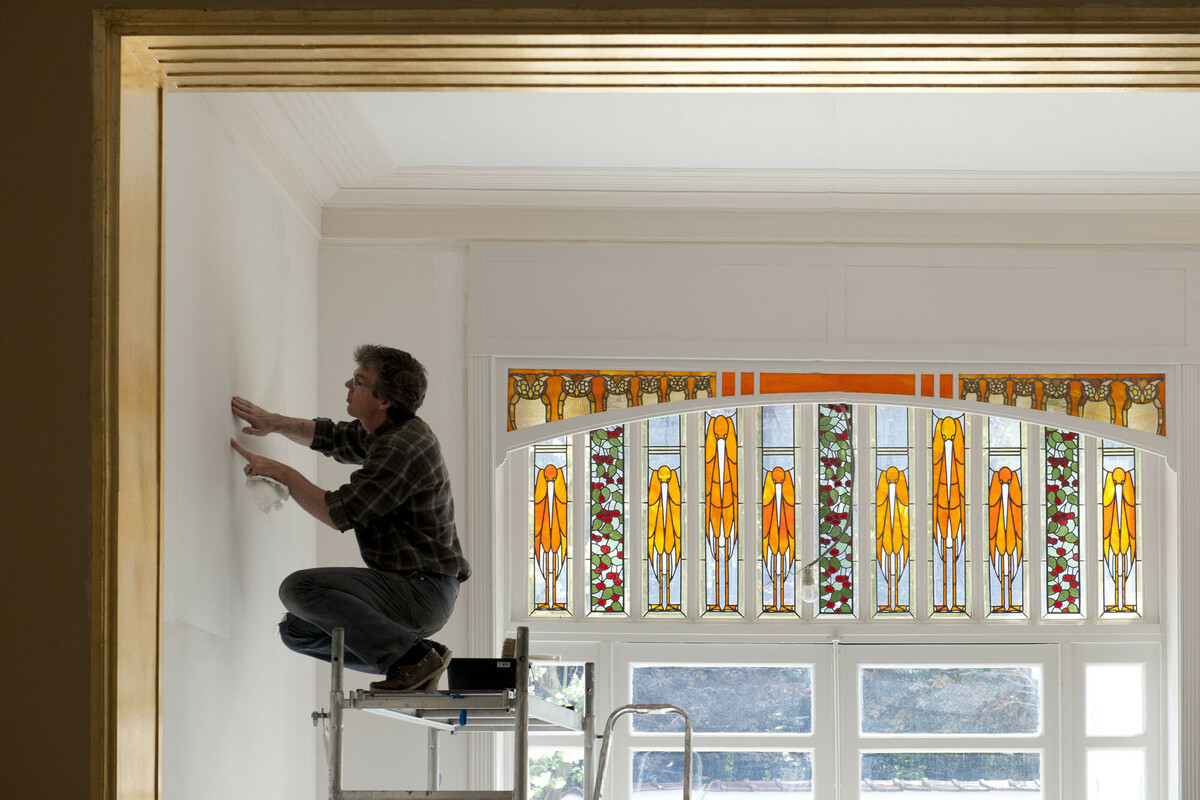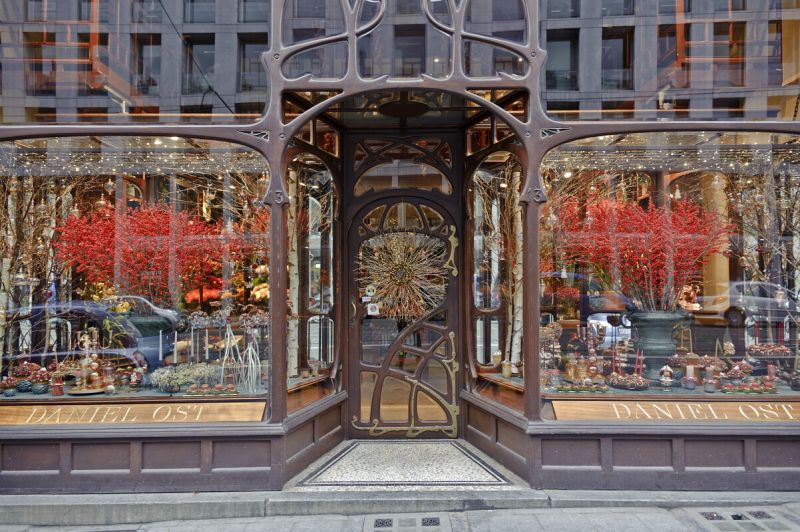Brussels, Art nouveau capital
Art nouveau Brussels 2023 presents a programme with the ambition of confirming Brussels as the capital of Art Nouveau.
1893 saw the opening of Hôtel Tassel in Brussels, an iconic building by Victor Horta and the first "Art nouveau" building.
Today, Brussels is full of buildings, furniture, objects and works of art linked to Art Nouveau. To mark this 130th anniversary, the Brussels-Capital Region has decided to dedicate 2023 to Art Nouveau.

A packed, accessible and inclusive Art nouveau Brussels 2023 programme is being organised jointly by urban.brussels, visit.brussels and their partners. Under the responsibility of Art nouveau Brussels 2023 curator Paul Dujardin, all the stakeholders have been working for several months to create a programme that is as full as it is varied.
A large number of events will be held over the 12 months. Visitors from Belgium and elsewhere will be delighted.
The programme will showcase major elements of heritage through updated and enhanced museum programmes, numerous large-scale exhibitions, festive events, guided tours, conferences, publications and multiple international partnerships.
This small Art Nouveau jewel will reopen in 2023. Built by Jules Brunfaut for aesthete and collector Edouard Hannon, the Hannon House has exceptional architecture, furniture and decoration. On the first floor, the building will also host a temporary exhibition for several months on Belgian Art Nouveau lines (Hankar, Serrurier-Bovy and van de Velde).
A new Art Nouveau tour at the Art and History Museum. After the recreation of the Wolfers jewellery shop, designed by Victor Horta, the Art and History Museum is now devoting two new rooms to the 19th and 20th centuries and will offer a brand new tour dedicated to Art nouveau from autumn 2023. The tour will present several exceptional works including the famous winter garden designed by Victor Horta for Jean Cousin.
The Hôtel van Eetvelde, built by Victor Horta, is an exceptional building listed as a UNESCO World Heritage Site. It is divided into two parts; the left part was recently acquired by the Brussels-Capital Region with the goal of developing a centre for the interpretation of Art Nouveau, making it a place for dialogue with contemporary creation, as well as a space for research and debates, partly by questioning the links with colonialism. Hôtel van Eetvelde is also strategically located to become the information point on Art nouveau Year. It will be open to the public several days a week and host numerous activities (conferences, workshops, etc.). Visitors will also be able to visit the former office of Edmond Van Eetvelde and learn more about Brussels' Art Nouveau in an exhibition tracing the great moments in this movement, as well as its relationship with colonisation.
- Major festive events
Major events such as the Bright Festival (16 to 19 February) and the Iris Festival (6 and 7 May) will be tinged with Art Nouveau for the occasion. The BANAD Festival (11 to 26 March) and the Heritage Days (16 and 17 September), two events that aim to highlight and attract visitors to emblematic buildings, will further expand their programmes. Numerous other events will promote Art Nouveau, such as BRAFA (January), Spring at the Cemeteries (May) and the Artonov Festival (October).
Iconic buildings and collections accessible all year round. Many of the buildings and collections will be made accessible on an ad hoc basis, but a dozen or so will be open throughout the year. They include seven works of art by Victor Horta: the Horta Museum, the Hôtel Solvay, the Hôtel Van Eetvelde, the Autrique House, the Comics Art Museum, the Temple of Human Passions and the Wolfers Frères jewellery shop made accessible thanks to the Art and History Museum.
Two other museums will allow visitors to admire exceptional architecture and collections: the Musical Instruments Museum and the Fin-de-Siècle Museum. Lastly, two house-museums will present the daily life of artists and collectors of the time: the Cauchie House and the Hannon House.
- Exhibitions
Art Nouveau Brussels 2023 also aims to question the obvious regarding Victor Horta's work, notably through the "Victor Horta and the Grammar of Art nouveau" exhibition at BOZAR and the "Victor Horta versus Art nouveau. Horta’s vocabulary" exhibition at the Horta Museum (March to December), as well as an interactive phygital experience around the stones on the façade of Hôtel Aubecq. The Stoclet Palace, an iconic Brussels building, will be honoured in the "Josef Hoffmann. Beyond Beauty and Modernity" exhibition at the Art and History Museum.
Numerous partners will take up the theme from different angles to showcase their collections and offer an original interpretation. Here is an overview of the other temporary exhibitions: Brussels City Museum: "Back to Nature 1900" (February to October), Artistic Heritage Association: "The spirit of Art Nouveau, Photographs by Gilbert De Keyser" (February to April), "Victor Van Dyck, Painter-Decorator (1862-1943)" (May to July), CIVA: "The Unmade Pavilion" (working title) (March to September), Autrique House: "Privat Livemont Flower Power" (March 2023 to January 2024), BELvue Museum and King Baudouin Foundation: "Art nouveau. Masters from here" (working title) (May to October), Design Museum: "Resonances.
Encounter between Art Nouveau and plastic design" (September 2023 to January 2024), Comics Art Museum: "Comic Strip and Art Nouveau" (September 2023 to January 2024), MAD: "Jaime Hayon" (September 2023 to January 2024), Train World: "Horta, Van de Velde & Friends – Le train des créateurs" (October 2023 to June 2024) and "From Art Nouveau to Fashion" from the Fashion & Lace Museum to the Horta Museum (November 2023 to January 2024). Lastly, the Halles Saint-Géry will focus its entire annual programme on Art Nouveau and present a range of activities on different themes. It will also present several exhibitions exploring different aspects of Art Nouveau.
The first will be "Art Nouveau on Show!" (January to April). Other exhibition spaces will also take part in art Nouveau Year by loaning works from their collections, such as the KBR, the Design Museum Ghent and the Museum of Ixelles.
- Guided tours, conferences, workshops and publications
Throughout the year, the various cultural stakeholders (museums, municipalities, associations of guides and other organisations) will present guided trails throughout the region, as well as guided tours of buildings (private homes, schools, etc.) and construction sites. There will be a number of conferences on the fringes of the exhibitions and as part of annual programmes, organised by different partners. Several publications are also being prepared.
- A programme accessible to all audiences
In addition to a constant focus on inclusiveness and accessibility throughout the programme, some initiatives are aimed at specific audiences, such as schools, persons with a visual impairment and persons with reduced mobility.
- Brussels, the starting point for the global Réseau Art Nouveau Network
Several Belgian cities and institutions are also taking part in this Art Nouveau year, as custodians of a heritage that links them to the Belgian capital and reinforces Brussels' position at the crossroads of influences, creations and initiatives. Lastly, there is also a great deal of competition beyond our borders and many international delegations will be involved, thanks to exhibitions and meetings highlighting the connections between their countries of origin and Brussels Art Nouveau. During Art Nouveau Year, the 18 cities in the Réseau Art Nouveau Network (RANN, of which Brussels is a founding member, will present their Art Nouveau heritage on several occasions.
- The adapted Art Nouveau Pass
In 2023, the Art Nouveau Pass will adapt to the programming and include discounts for temporary exhibitions and guided tours dedicated to Art nouveau.
- Implementation of the lighting plan for emblematic buildings
In partnership with Sibelga, the Brussels-Capital Region will showcase the façades of five buildings that are emblematic of Brussels Art Nouveau: the Hôtel Solvay, the Hannon House, the Horta Museum, the Cauchie House and the Hôtel Van Eetvelde.
